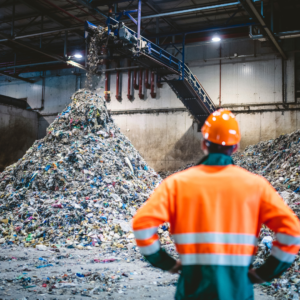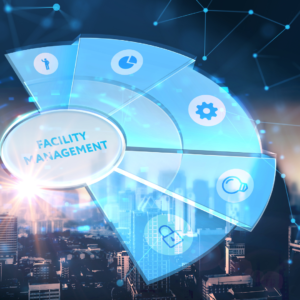When it comes to managing traffic at your construction site, efficiency and safety should be your top priorities. Hiring a professional traffic control company is essential to ensure smooth traffic flow and minimise the risk of accidents. At Intaus Group, we understand the importance of reliable traffic control services for your construction project.
With years of experience in the industry, our team of highly trained professionals has the expertise to handle all aspects of traffic management, from planning and implementation to maintenance and monitoring. By entrusting your traffic control needs to us, you can focus on other crucial aspects of your project, knowing that the traffic flow is being handled efficiently and safely.
Our professional traffic control services include comprehensive traffic plans, lane closures, detours, signage placement, flagging, and more. We adhere to the highest industry standards and comply with all relevant regulations, ensuring that your construction site is in full compliance with safety regulations.
The role of traffic control in construction projects
 Construction projects often involve heavy machinery, large vehicles, and a significant increase in traffic around the site. Without proper traffic control measures in place, the chaos and confusion can lead to accidents, delays, and even legal issues. That’s where a professional traffic control company comes in.
Construction projects often involve heavy machinery, large vehicles, and a significant increase in traffic around the site. Without proper traffic control measures in place, the chaos and confusion can lead to accidents, delays, and even legal issues. That’s where a professional traffic control company comes in.
A traffic control company plays a crucial role in managing the flow of vehicles and pedestrians around the construction site. They develop comprehensive traffic plans that take into account the project’s specific needs, local regulations, and safety requirements. These plans include strategies for lane closures, detours, signage placement, flagging, and more.
By having a well-thought-out traffic plan in place, construction companies can ensure that vehicles and pedestrians can safely navigate around the site without causing disruptions or accidents. This not only enhances safety but also improves overall project efficiency.
Why hiring a professional traffic control company is crucial
While some construction companies may consider handling traffic control in-house or relying on temporary workers, there are several compelling reasons why hiring a professional traffic control company is the best choice.
First and foremost, a professional traffic control company brings expertise and experience to the table. Their team of highly trained professionals understands the complexities of traffic management and can develop effective strategies tailored to the unique requirements of your construction project.
Additionally, professional traffic control companies have access to the latest equipment and technology, allowing them to implement advanced traffic control measures. From electronic signage to real-time traffic monitoring systems, these tools enable them to efficiently manage traffic flow and respond to any unexpected situations that may arise.
By entrusting your traffic control needs to a professional company, you can focus on other crucial aspects of your construction project, knowing that the traffic flow is being handled efficiently and safely. This not only saves you time and resources but also ensures that your project stays on schedule.
Benefits of hiring a professional traffic control company
Hiring a professional traffic control company offers numerous benefits for your construction project. Here are some of the key advantages:
Enhanced safety: Professional traffic control companies prioritise safety above all else. They have extensive knowledge of safety regulations, industry best practices, and local laws, ensuring that your construction site is in full compliance. By mitigating potential risks, accidents can be significantly reduced, protecting the well-being of both workers and the public.
Efficient traffic flow: With their expertise and experience, professional traffic control companies can optimise traffic flow around the construction site. By implementing well-planned detours, lane closures, and signage placement, they ensure that vehicles and pedestrians are directed efficiently, minimising congestion and delays.
Reduced liability: Construction sites are inherently risky environments, and accidents can result in costly legal battles. By hiring a professional traffic control company, you mitigate the risk of accidents occurring due to inadequate traffic management. This helps protect your company from potential lawsuits and costly legal disputes.
Compliance with regulations: Traffic control in construction projects is governed by various regulations and guidelines. Professional traffic control companies have a deep understanding of these legal requirements and ensure that your project complies with all relevant laws. This helps you avoid fines and penalties that may result from non-compliance.
Understanding the legal requirements for traffic control in construction
To ensure the safety of workers, pedestrians, and motorists, it is crucial to understand the legal requirements for traffic control in construction projects. These requirements vary by location, but they generally include:
Permits and approvals: Before starting any construction project, it is essential to obtain the necessary permits and approvals related to traffic control. This may involve submitting traffic management plans, obtaining road closure permits, and coordinating with local authorities.
Signage and markings: Proper signage and markings play a crucial role in directing traffic and alerting drivers to construction activities. The specific requirements for signage and markings, such as size, colour, and placement, are typically outlined in local regulations.
Flagging and personnel: In some cases, flaggers may be required to direct traffic and ensure the safety of workers and pedestrians. Flaggers must undergo training and certification to perform their duties effectively.
Traffic management plans: Construction projects often require the development of comprehensive traffic management plans. These plans outline the strategies and measures that will be implemented to manage traffic flow, including detours, lane closures, and signage placement.
By understanding and complying with these legal requirements, you can ensure that your construction site is safe and in full compliance with the law.
The risks of not having proper traffic control measures in place
 Failing to implement proper traffic control measures on your construction site can have serious consequences. Here are some of the risks associated with inadequate traffic management:
Failing to implement proper traffic control measures on your construction site can have serious consequences. Here are some of the risks associated with inadequate traffic management:
Increased accidents: Without proper traffic control measures, the risk of accidents significantly increases. Vehicles and pedestrians may become confused or unaware of construction activities, leading to collisions, injuries, and even fatalities.
Traffic congestion: Inefficient traffic flow due to the absence of traffic control measures can result in significant congestion around the construction site. This not only causes frustration for motorists but also leads to delays and increased project costs.
Negative public perception: Construction projects that disrupt traffic without proper control measures in place can create a negative perception among the public. This can damage your company’s reputation and potentially harm future business opportunities.
Legal consequences: Non-compliance with traffic control regulations can result in legal consequences, including fines, penalties, and potential lawsuits. These legal battles can be time-consuming and costly, affecting your project’s timeline and budget.
How a professional traffic control company ensures safety on construction sites
Safety is paramount on construction sites, and a professional traffic control company plays a critical role in ensuring the well-being of workers, pedestrians, and motorists. Here’s how they achieve this:
Developing comprehensive traffic plans: Professional traffic control companies create detailed traffic plans tailored to the specific requirements of your construction project. These plans consider factors such as project scope, traffic volume, and local regulations. By having a well-designed plan in place, potential safety hazards can be identified and mitigated.
Implementing effective traffic control measures: From placing signage and markings to redirecting traffic through detours, a professional traffic control company implements a range of measures to manage traffic flow and ensure safety. They also provide trained flaggers who can direct traffic and assist pedestrians, further enhancing safety on-site.
Regular monitoring and maintenance: A professional traffic control company continuously monitors traffic conditions on your construction site. They make adjustments as needed to ensure that traffic flow remains smooth and safe. Regular maintenance and inspection of signage and equipment also ensure that everything is in proper working order.
Training and certification: Traffic control professionals undergo rigorous training and certification programs to develop the skills necessary to manage traffic effectively. They are well-versed in safety protocols, industry best practices, and the latest techniques for traffic management.
By entrusting your traffic control needs to a professional company, you can rest assured that safety is a top priority throughout your construction project.
The expertise and training of traffic control professionals
Professional traffic control companies employ highly trained and skilled professionals who have undergone extensive training and certification. These professionals possess the expertise and knowledge necessary to handle various aspects of traffic management, including:
Traffic flow optimisation: Traffic control professionals understand the principles of traffic engineering and apply them to optimise traffic flow around the construction site. They take into account factors such as road capacity, traffic volume, and the movement of vehicles and pedestrians.
Signage and markings: Professionals in the field are well-versed in the proper placement and use of signage and markings. They ensure that these visual cues effectively communicate traffic rules and construction activities to drivers, helping to prevent accidents.
Flagging and pedestrian management: Trained flaggers play a crucial role in directing traffic and ensuring the safety of workers and pedestrians. Traffic control professionals have the knowledge and expertise to deploy flaggers effectively, minimising risks and maintaining a smooth flow of traffic.
Emergency response: In the event of an emergency or unforeseen circumstances, traffic control professionals are trained to respond swiftly and effectively. They can adjust traffic control measures to accommodate emergency vehicles or reroute traffic as necessary.
By leveraging the expertise and training of traffic control professionals, you can be confident that your construction site’s traffic flow is in capable hands.
The cost-effectiveness of hiring a professional traffic control company
While some construction companies may consider managing traffic control in-house to save costs, this approach can be counterproductive in the long run. Hiring a professional traffic control company offers several cost-effective advantages:
Efficiency and productivity – By entrusting traffic control to professionals, you free up your own resources and manpower to focus on core construction tasks. This improves overall project efficiency and productivity, potentially reducing costs and completion time.
Avoiding accidents and delays – Accidents and delays resulting from inadequate traffic control can be costly in terms of both time and money. By investing in professional traffic control services, you minimise the risk of accidents and keep your project on track, saving you potential expenses.
Compliance with regulations – Non-compliance with traffic control regulations can result in fines and penalties. By hiring a professional traffic control company that is well-versed in local laws and regulations, you can avoid these costly consequences.
Equipment and technology – Professional traffic control companies have access to advanced equipment and technology that can enhance efficiency and safety. Investing in this equipment yourself may not be cost-effective, especially for smaller construction companies.
When considering the cost-effectiveness of hiring a professional traffic control company, it’s essential to weigh the potential savings and benefits against the expense of their services.
Selecting the right traffic control company for your construction project is crucial to ensure the success and safety of your undertaking.
Here are some key factors to consider when making your choice:
Experience and reputation – Look for a traffic control company with a proven track record and extensive experience in the industry. Check their references, read customer reviews, and inquire about their previous projects to gain insight into their expertise and reputation.
Certifications and training – Ensure that the traffic control company’s staff members are properly trained and certified. Ask about their training programs and certifications to ensure that they possess the necessary skills to handle traffic control on your construction site.
Equipment and technology – Enquire about the equipment and technology the company utilises. A professional traffic control company should have access to the latest tools and resources to efficiently manage traffic flow.
Compliance with regulations – Ensure that the traffic control company is well-versed in local traffic control regulations and standards. They should have a deep understanding of the legal requirements and be able to develop plans that comply with all relevant regulations.
By carefully considering these factors, you can select a traffic control company that aligns with your project’s needs and goals. If you would like to discuss our traffic control services please reach out on 1300 146 835.
 As we work with organisation to help them implement sustainable waste management strategies. Intaus Group are not only reducing environmental impact we explore strategies that include waste reduction, recycling programs, energy recovery, and responsible disposal. By prioritising waste reduction and recycling, we are not only minimising carbon footprint but also significantly saving our clients money.
As we work with organisation to help them implement sustainable waste management strategies. Intaus Group are not only reducing environmental impact we explore strategies that include waste reduction, recycling programs, energy recovery, and responsible disposal. By prioritising waste reduction and recycling, we are not only minimising carbon footprint but also significantly saving our clients money. 
 A large hospital facility has implemented a comprehensive waste management program to reduce medical waste, recycle materials, and promote sustainability across its operations. By engaging employees, patients, and suppliers in waste reduction efforts, the hospital was able to achieve significant cost savings and regulatory compliance.
A large hospital facility has implemented a comprehensive waste management program to reduce medical waste, recycle materials, and promote sustainability across its operations. By engaging employees, patients, and suppliers in waste reduction efforts, the hospital was able to achieve significant cost savings and regulatory compliance. 
 Educational facilities, including schools and universities, are more than just physical structures. They are dynamic spaces that facilitate the process of learning and growth. As such, maintaining these facilities is important not only for the safety and comfort of students and staff but also for enhancing the overall educational experience.
Educational facilities, including schools and universities, are more than just physical structures. They are dynamic spaces that facilitate the process of learning and growth. As such, maintaining these facilities is important not only for the safety and comfort of students and staff but also for enhancing the overall educational experience.  Technology has become an integral part of modern education. Many schools have already moved down the path of integrating technology into their facilities, such as providing access to computers and high-speed internet, creating interactive classrooms with smart boards and projectors, or implementing online learning platforms. This not only enhances students’ learning experience but also prepares them for the digital world outside of school. Much of this technology required regular updates and maintenance, making it a continuous effort for schools to stay current with the latest advancements.
Technology has become an integral part of modern education. Many schools have already moved down the path of integrating technology into their facilities, such as providing access to computers and high-speed internet, creating interactive classrooms with smart boards and projectors, or implementing online learning platforms. This not only enhances students’ learning experience but also prepares them for the digital world outside of school. Much of this technology required regular updates and maintenance, making it a continuous effort for schools to stay current with the latest advancements. The outdoor spaces of educational facilities also need attention. Landscaping not only enhances the aesthetic appeal of the facility but can also provide additional learning opportunities. For instance, a well-maintained garden could serve as a learning space for biology lessons.
The outdoor spaces of educational facilities also need attention. Landscaping not only enhances the aesthetic appeal of the facility but can also provide additional learning opportunities. For instance, a well-maintained garden could serve as a learning space for biology lessons. 1. Energy Efficiency: The Low-Hanging Fruit
1. Energy Efficiency: The Low-Hanging Fruit Taking a proactive approach to property care is essential for any property owner or manager. It allows you to identify potential issues before they become major problems, saving you both time and money in the long run. By investing in building maintenance services, you can prevent costly repairs, extend the lifespan of your building’s components, and enhance the overall value of your property.
Taking a proactive approach to property care is essential for any property owner or manager. It allows you to identify potential issues before they become major problems, saving you both time and money in the long run. By investing in building maintenance services, you can prevent costly repairs, extend the lifespan of your building’s components, and enhance the overall value of your property. Maintaining your building’s HVAC (Heating, Ventilation, and Air Conditioning) system is essential for ensuring the comfort, health, and productivity of its occupants. Regular HVAC system maintenance involves cleaning, inspecting, and tuning up your heating and cooling equipment to ensure optimal performance and energy efficiency.
Maintaining your building’s HVAC (Heating, Ventilation, and Air Conditioning) system is essential for ensuring the comfort, health, and productivity of its occupants. Regular HVAC system maintenance involves cleaning, inspecting, and tuning up your heating and cooling equipment to ensure optimal performance and energy efficiency. Maintaining a secure and safe environment is essential for any property owner or manager. Investing in security and surveillance systems helps protect your building, its occupants, and its assets from potential threats or risks.
Maintaining a secure and safe environment is essential for any property owner or manager. Investing in security and surveillance systems helps protect your building, its occupants, and its assets from potential threats or risks. When it comes to pursuing a successful career, choosing the right training provider is crucial. A Registered Training Organisation (RTO) offers numerous benefits that can give you a competitive edge in the job market.
When it comes to pursuing a successful career, choosing the right training provider is crucial. A Registered Training Organisation (RTO) offers numerous benefits that can give you a competitive edge in the job market. Choosing the right Registered Training Organisation (RTO) is crucial to your career success. With numerous options available, it’s important to consider certain factors before making a decision.
Choosing the right Registered Training Organisation (RTO) is crucial to your career success. With numerous options available, it’s important to consider certain factors before making a decision. Registered Training Organisations work closely with industry partners to ensure that their training programs align with current industry practices. This collaboration helps to bridge the gap between education and employment by providing graduates with the skills that employers are seeking.
Registered Training Organisations work closely with industry partners to ensure that their training programs align with current industry practices. This collaboration helps to bridge the gap between education and employment by providing graduates with the skills that employers are seeking. Construction projects often involve heavy machinery, large vehicles, and a significant increase in traffic around the site. Without proper traffic control measures in place, the chaos and confusion can lead to accidents, delays, and even legal issues. That’s where a professional traffic control company comes in.
Construction projects often involve heavy machinery, large vehicles, and a significant increase in traffic around the site. Without proper traffic control measures in place, the chaos and confusion can lead to accidents, delays, and even legal issues. That’s where a professional traffic control company comes in. Failing to implement proper traffic control measures on your construction site can have serious consequences. Here are some of the risks associated with inadequate traffic management:
Failing to implement proper traffic control measures on your construction site can have serious consequences. Here are some of the risks associated with inadequate traffic management: One common challenge in supply chain management is the lack of visibility across the entire supply chain. Without visibility, businesses can struggle to track inventory, identify bottlenecks, and make data-driven decisions. Another challenge is poor communication and collaboration with suppliers and logistics partners. Inefficient communication can lead to delays, errors, and increased costs. Manual processes and outdated technology systems are also common challenges that hinder supply chain efficiency.
One common challenge in supply chain management is the lack of visibility across the entire supply chain. Without visibility, businesses can struggle to track inventory, identify bottlenecks, and make data-driven decisions. Another challenge is poor communication and collaboration with suppliers and logistics partners. Inefficient communication can lead to delays, errors, and increased costs. Manual processes and outdated technology systems are also common challenges that hinder supply chain efficiency. Streamlining your supply chain is a continuous process that requires ongoing evaluation and improvement. By adopting key strategies and best practices, businesses can enhance their supply chain operations, reduce lead times, and increase overall productivity. From leveraging technology solutions to improving communication and collaboration, each aspect of the supply chain plays a crucial role in achieving efficiency.
Streamlining your supply chain is a continuous process that requires ongoing evaluation and improvement. By adopting key strategies and best practices, businesses can enhance their supply chain operations, reduce lead times, and increase overall productivity. From leveraging technology solutions to improving communication and collaboration, each aspect of the supply chain plays a crucial role in achieving efficiency.
 Expertise and Professionalism
Expertise and Professionalism While commercial cleaning services play a significant role in keeping your workspace clean, there are steps you can take to maintain cleanliness and organisation on a daily basis:
While commercial cleaning services play a significant role in keeping your workspace clean, there are steps you can take to maintain cleanliness and organisation on a daily basis:
 Facilities management is a multifaceted discipline that encompasses a wide range of responsibilities. The primary role of a facilities manager is to ensure that their organisation’s physical assets are well-maintained, safe, and functional. Here are some of the key responsibilities of a facilities manager:
Facilities management is a multifaceted discipline that encompasses a wide range of responsibilities. The primary role of a facilities manager is to ensure that their organisation’s physical assets are well-maintained, safe, and functional. Here are some of the key responsibilities of a facilities manager: